Click on images to enlarge
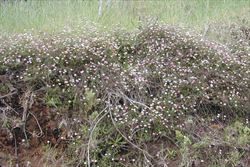
infestation in Hawaii (Photo: Forest and Kim Starr, USGS)
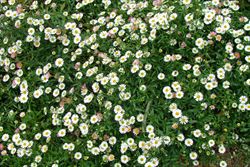
habit (Photo: Sheldon Navie)
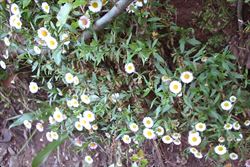
habit growing on a creekbank (Photo: Sheldon Navie)

lower leaves (Photo: Sheldon Navie)

stem and upper leaves (Photo: Sheldon Navie)
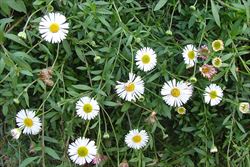
flower-heads (Photo: Sheldon Navie)
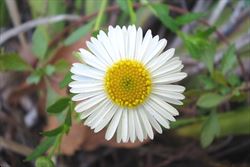
close-up of flower-head (Photo: Sheldon Navie)
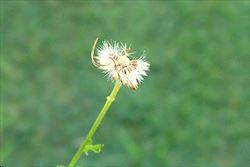
close-up of seeds (Photo: Sheldon Navie)
Scientific Name
Erigeron karvinskianus DC.
Family
Asteraceae (Queensland, New South Wales, the ACT, Victoria, Tasmania, Western Australia and the Northern Territory)Compositae (South Australia)
Common Names
bony tip fleabane, bony-tip fleabane, coastal daisy, daisy, daisy fleabane, erigeron, fleabane, Latin American fleabane, Mexican daisy, Mexican fleabane, Santa Barbara daisy, sea-side daisy, seaside daisy, wall daisy
Origin
Native to Mexico, Central America (i.e. Costa Rica, El Salvador, Guatemala, Honduras and Nicaragua) and northern South America (i.e. Venezuela, Colombia and Ecuador).
Naturalised Distribution
Widely naturalised in southern Australia (i.e. in eastern New South Wales, southern Victoria, Tasmania, south-eastern South Australia and south-western Western Australia). Also naturalised on Norfolk Island and recently naturalised in south-eastern Queensland.
Naturalised overseas in Europe, the Azores, tropical Africa, New Zealand, south-western USA (i.e. California), southern South America, La Réunion and Hawaii.
Notes
This species is regarded as an environmental weed in New South Wales, Victoria, Tasmania and South Australia and as a potential environmental weed or "sleeper weed" in other parts of Australia. It has spread from cultivation in recent times and is becoming troublesome in natural areas, particularly along waterways, in coastal habitats and in moist disturbed sites.
In New South Wales it is naturalised from Alstonville on the far north coast to the Kiama area on the south coast. Seaside daisy (Erigeron karvinskianus) appears on numerous local and regional environmental weed lists in this state (e.g. in the Sydney North region, the South Coast region, the wider Sydney and Blue Mountains region, the Warringah Council and the Blue Mountains Council), and has also been recorded in conservation areas (e.g. Lane Cove National Park).
In South Australia it is listed as an invasive garden plant in the Greater Adelaide region and is also present in conservation areas (e.g. Cobbler Creek Recreation Park). In Victoria, where seaside daisy (Erigeron karvinskianus) is a very common garden plant, it is widely naturalised in the southern parts of the state. In Tasmania it is a common environmental weed of coastal sites in the north-western parts of the state, while in Western Australia it is becoming common in south-western parts of the state. There are also recent records of seaside daisy (Erigeron karvinskianus) becoming naturalised in the south-eastern corner of Queensland, including from Burleigh Heads National Park on the Gold Coast.
Seaside daisy (Erigeron karvinskianus ) is also listed among the top ten priority weeds of La Reunion, in the Indian Ocean, where it has formed dense infestations on cliff-faces. It is also a weed of rock walls, stony places, roadsides, streamsides and forest margins in New Zealand.

